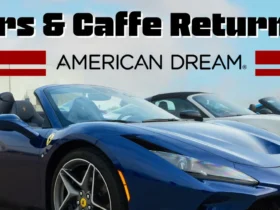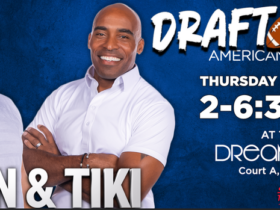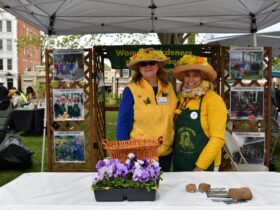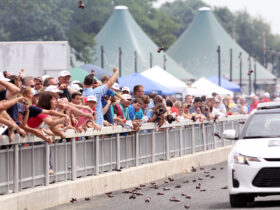
By Lloyd A. Rosenberg, AIA, President & CEO of DMR Architects
In anticipation of our 30th Anniversary, I was asked often about how we built the firm that DMR is today. But as I reflect on this answer, I find that the key to our longevity is just as much in the answers to “what?” and most importantly, “who?”
We opened in 1991 with four employees who had a vision to push boundaries with technology, innovative design and attentiveness to our client’s operational opportunities and objectives.
It was a vision that began more than 30 years prior at the College of Architecture at the University of Oklahoma, which I attended during its golden era, studying under famous architects including Lloyd Wright, son of Frank Lloyd Wright, Bruce Goff, Herb Greene and Paolo Soleri. The program shaped not only a design sensibility in me, but the grueling 5-year program instilled in me a high energy for the work.
My career prior to founding DMR provided a wide variety of experiences and projects that were excellent preparation for creating and running the practice we have today. I built an entire city in Nigeria, where I would spend three months at a time and once even hid out in a safe house during a coup. I also designed a $100 million luxury apartment complex that received attention as the units were rentals, an uncommon concept at the time.
Eventually, the nature of the projects I worked on grew to focus largely on the educational sector. Appropriately, when I founded DMR, we set out to provide professional services primarily to school districts and we landed our first major project, a new elementary school in Brewster, NY.
At that time, we never could have mapped out a plan for creating and sustaining the broad set of practice areas and disciplines that now comprise DMR. But from the first day I knew that we would achieve one of the most elusive aspects of architecture: a durable enterprise.
I envisioned a firm ingrained in the fabric of New Jersey’s real estate industry and most importantly, a place where talented people do great work. This meant building a company that could withstand economic cycles, keep pace with emerging technologies and practices and one that was constantly cultivating and empowering new talent. Diversification was critical to this goal.
Of course, the trust that our clients have put in us to construct some of the region’s most meaningful and essential projects over the years has also facilitated our execution of this vision. But, ultimately creating the base from which we grew was not just about timing; it was about intention.
Clients tend to emerge within cycles and reacting to market evolution was particularly essential to achieving stability in our practice. Identifying solutions for our client’s needs is the very basis of our mission – a commitment that calls on our passion to overcome challenges.
For us, diversification was a reflexive opportunity: because we had a practice that was cross pollinated, we saw solutions that more narrowly organized firms could never see. Because we had diverse clients, our people always had new and exciting challenges.
Every business has its own culture and value system and at DMR our focus is on guiding the firm based on a core belief that creating a rewarding environment for employees is one of the most important objectives of the firm. In service businesses, our staff is the most prized asset and we are devoted to nurturing our people so that they strive to reach their potential within our walls.
DMR is a place that celebrates not only big things like our 30th anniversary but also, holidays, professional achievements and personal milestones. We have fun together with ugly sweater and pumpkin carving contests, cruises around the Meadowlands and nights at the nearby racetrack.
When I reflect on the most important stats of DMR, it’s not project metrics that I am most proud of; it’s that our staff tenure averages over 10 years and that I have had the privilege to grow this firm along with a team of professionals just as invested in our success as I was, which includes many who have been here for upwards of 20 of DMR’s 30 years.
Of course, reflecting on our people also means preparing for the next 30 years of DMR. A threshold moment of the firm came in 2016, when for the first time, DMR named five partners. While I am as engaged and driven as at any other time in my career, I also recognize that a new generation is emerging here.
At our scale, we can provide opportunities for advancement for everyone who has the ambition and the energy to make things happen. The most gratifying aspect of this is that our management meetings focus on sustaining DMR by extending and enhancing the culture that brought us here.
Project Gallery

Meadowlands Rail Station: When we were commissioned to design the train station that would bring rail service to the Meadowlands for the first time, we had not designed a station before. Yet through our design philosophy fueled by a commitment to overcoming challenges through ingenuity and creativity, we created a facility that was praised by transit professionals, validating our mission that we could overcome any challenge our clients might present us with.

Blue Foundry Bank Corporate Headquarters, Parsippany: Blue Foundry Bank retained DMR not just to design each of their branches and a new headquarters, but to consider them pillars to express their corporate culture. Blue Foundry was committed to creating places that heighten engagement at all levels, using design to stimulate the business environment as a form of brand ambassador. Being awarded this work – and empowered to fulfill the vision of a progressive executive team during its launch as a public company – was extremely satisfying. This is what we worked 30 years to become: a place where design is a reflection of the mission of our clients as well as a functional and aesthetically stimulating environment.

Montgomery Municipal Center: Public buildings, including municipal buildings and public safety facilities, have been staple practice areas for DMR since its inception, but we know that these buildings are community pillars, reflecting the important work that happens within them and needing appropriately to fit into the community. In Montgomery, this meant our designers reflected on input from more than 200 residents who participated in the planning meetings to create a stunning municipal facility that honored the town’s rich history.

River Park Town Center, Hanover: One of our points of pride is that we can provide complementary services in-house, offering our clients unmatched expertise under one roof. In Hanover, the mix of planning insight and design reached new heights as we invented a new downtown center for a widespread suburb. With hotels, apartment buildings, retail centers, entertainment, restaurants and inspired public spaces, River Park Town Center is a capstone of insight that draws across our expansive history and our diverse practice offerings.

City of Hackensack Revitalization and Redevelopment Services: Perhaps the best-known New Jersey redevelopment of the 21st century, Hackensack as a planning project had its roots in an economic problem: how do we create the revenues needed to update aging infrastructure and to revitalize businesses whose relevance was lost when city centers were replaced by regional malls in the 1960s and 1970s? The answer turned out to be a mix of fiscal engineering and lifestyle evolution. Today that means more than 4,500 new residences and hundreds of millions of dollars in new ratables were brought to the City that now finds itself compared to the greatest recovery stories in New Jersey’s history.

Frank J. Gargiulo Campus, Hudson County Schools of Technology: Being awarded our largest project to date just as we celebrated 25 years in business was a thrill. The 350,000 sq. ft. project was a massive effort and is one of the most sophisticated, complex learning environments in the country. Yet we never wavered from the commitment we made in 1991 to provide important architectural services to the educational sector, no matter the size. That same year, we still brought on more than 25 pre-K-12 projects valued at less than $1 million, providing critical services to school districts.













